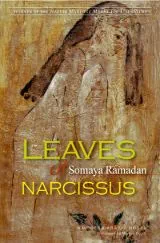On Writing by Stephen King...
Get ready to sit down with the master of horr...
By Adonis Monahan1657

0

“Some issues are so delicate and incapable of learning, for some reason, and they bleed every time as though it were the first time they had encountered a situation that provokes bleeding. Some tissues do not calcify, do not harden, just as some blood cannot clot.”
Written by Somaya Ramadan and then translated by Marilyn Booth, “Leaves of Narcissus” is a novel that is told through the view-point of Kimi, a young Egyptian woman, who faces mental struggles. The novel has been compared, several times, to Sylvia Plath’s “The Bell Jar” and a lot of research has been conducted to show their similarities.
The writer even compares the main character to Plath, in the novel, as she writes “Until that moment the bell had been protecting her: she had been capable of laughing now and then, even when Tara had called her ‘Sylvia’ or even, ‘Hey Plath’”. Furthermore, Kimi’s psychological issues are often compared to those of Sylvia.
The novel explores the contradiction and confusion Kimi tends to face, within herself. This great work of art focuses on Kimi’s inability to distinguish between her own pain and the pain felt by others. She suffers from feeling too much, thinking too much, writing, and then rewriting.
Kimi, the young Egyptian girl, is on a quest for education. She goes to Ireland to search for it, and it is there where she struggles and becomes a victim of the ambiguous cultural shifts between the east and the west and the contradicting representations.
Kimi reflects on her world, her childhood, and her family. Through her eyes, we read a story on home and homelessness and on existence without knowing oneself. She writes “all homelands are mine and so I am without homeland or nation.” She poses a lot of questions without giving answers.
These questions make us look deep within ourselves.
Updated 4 years ago